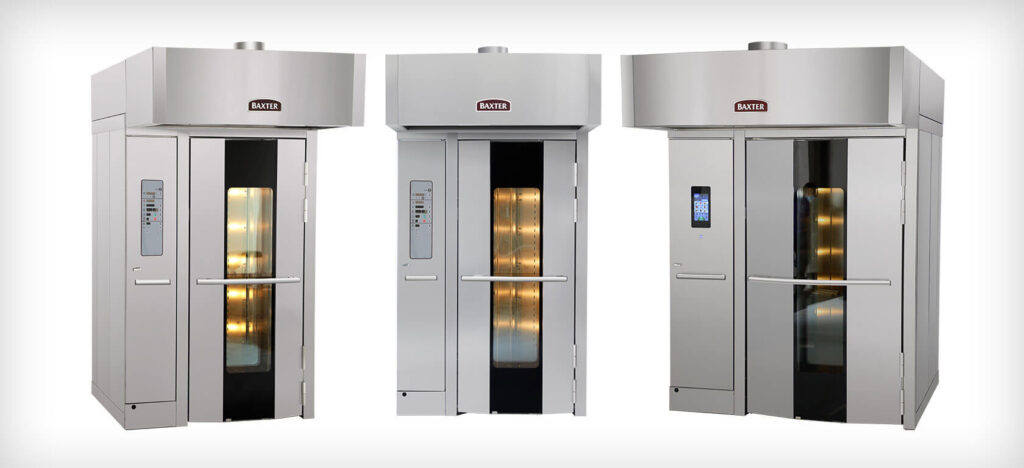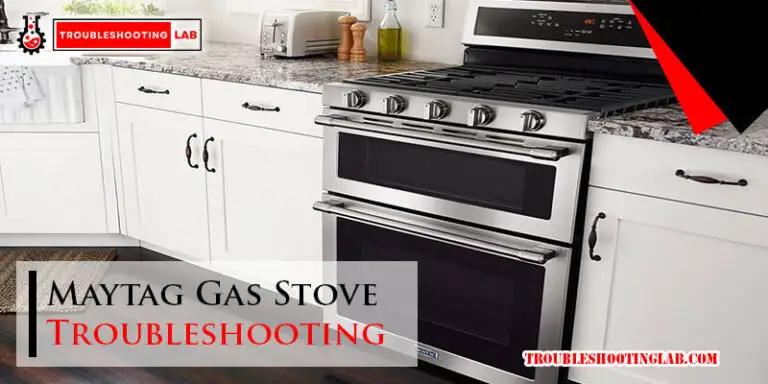Baxter Oven Troubleshooting: Top Tips for Quick Fixes
To troubleshoot a Baxter oven, first check power connections and ensure proper voltage. Next, inspect the thermostat and heating elements.Baxter ovens are popular in commercial kitchens for their reliability and efficiency. Yet, like any equipment, they may encounter issues. Common problems include power failures, inaccurate temperature readings, and uneven heating. Regular maintenance and prompt troubleshooting can keep your oven running smoothly.
Start by ensuring all power connections are secure and the oven receives the correct voltage. Inspecting the thermostat and heating elements can pinpoint specific issues. Keeping your Baxter oven in top condition ensures consistent cooking results, which is crucial for maintaining quality in a busy kitchen. Proper care can extend the lifespan of your equipment and save on repair costs.

Common Issues
Baxter ovens are known for their reliability. But, like all machines, they can experience issues. This section covers the most common problems you might face. It will help you troubleshoot effectively.
Temperature Fluctuations
Temperature fluctuations can affect your baking results. Here are some potential causes and solutions:
- Thermostat Issues: A faulty thermostat can cause erratic temperatures.
- Door Seal: Ensure the door seal is intact. A broken seal can let heat escape.
- Heating Elements: Check if the heating elements are working properly. Replace them if needed.
Power Problems
Power problems can halt your baking process. Identify and fix the following issues:
- Power Supply: Ensure the oven is plugged in and the outlet works.
- Fuse: Check the oven’s fuse. Replace it if it’s blown.
- Control Board: A malfunctioning control board can disrupt power. Inspect and replace if necessary.
| Issue | Potential Cause | Solution |
|---|---|---|
| Temperature Fluctuations | Thermostat, Door Seal, Heating Elements | Check and replace faulty parts |
| Power Problems | Power Supply, Fuse, Control Board | Inspect and replace faulty parts |
Remember to always consult your Baxter oven manual. Follow safety guidelines before troubleshooting.
Safety Precautions
Handling a Baxter oven requires utmost care. Ensuring safety is crucial. Following safety measures can prevent accidents and injuries. Below are important safety steps to follow.
Disconnect Power
Always disconnect the power before starting any troubleshooting. Unplug the oven from the wall outlet. This step protects you from electrical shocks. Make sure the oven is completely off before proceeding.
Protective Gear
Wear the right protective gear for your safety. Use insulated gloves to protect your hands from burns. Safety goggles shield your eyes from sparks and debris. Consider wearing a long-sleeved shirt to protect your arms.
| Protective Gear | Purpose |
|---|---|
| Insulated Gloves | Protect hands from burns |
| Safety Goggles | Shield eyes from sparks |
| Long-Sleeved Shirt | Protect arms from debris |
Following these safety precautions ensures a safer troubleshooting process. Always prioritize your safety when working with electrical appliances.
Tools Needed
Understanding the tools you need is essential for successful Baxter oven troubleshooting. Having the right tools makes the process smoother and more efficient. Below, we have outlined the basic tools and a multimeter, crucial for diagnosing and fixing issues.
Basic Toolkit
A basic toolkit is essential for any repair job. For Baxter ovens, ensure you have:
- Screwdrivers – both flathead and Phillips.
- Wrenches – adjustable and fixed sizes.
- Pliers – needle-nose and slip-joint.
- Hex Keys – also known as Allen wrenches.
- Wire Cutters – for electrical repairs.
These tools help you access and adjust components of the oven.
Multimeter
A multimeter is vital for diagnosing electrical issues. It measures:
- Voltage
- Current
- Resistance
Using a multimeter helps pinpoint electrical faults in the oven. Follow these steps to use a multimeter:
- Set the multimeter to the correct setting.
- Test the multimeter on a known source.
- Measure the oven’s components as needed.
This tool ensures accurate readings and efficient problem-solving.
Identifying Problems
Identifying problems with your Baxter oven can save time and money. Simple checks can often solve many issues. Below, we’ll guide you through key steps.
Visual Inspection
A visual inspection can reveal obvious issues. Look at the oven’s exterior and interior. Check for signs of wear, damage, or dirt. Make sure to:
- Inspect the door seal for cracks or breaks.
- Ensure the oven racks are aligned properly.
- Look for any burnt or melted areas inside the oven.
Sometimes, a simple cleaning can fix problems. Clean any dirt or food residue. Use a soft cloth and mild detergent. Avoid harsh chemicals that might damage the oven parts.
Error Codes
Your Baxter oven may display error codes when something goes wrong. These codes help you pinpoint the problem. Below are common error codes and their meanings:
| Error Code | Meaning |
|---|---|
| E1 | Temperature sensor failure |
| E2 | Door latch problem |
| E3 | Fan motor issue |
If you see an error code, consult your Baxter oven manual. The manual will provide specific troubleshooting steps. Sometimes, resetting the oven can clear the error code.
Follow these steps to reset:
- Turn off the oven and unplug it.
- Wait for 5 minutes.
- Plug the oven back in and turn it on.
If the error code persists, contact a professional for help. Do not attempt complex repairs yourself.
Temperature Fixes
Maintaining the right temperature in your Baxter oven is crucial. If your oven isn’t heating correctly, you might need to troubleshoot the temperature settings. This guide will help you with thermostat adjustments and sensor replacements.
Thermostat Adjustment
Sometimes, the oven’s thermostat can get out of sync. To fix this, follow these steps:
- Turn off the oven and unplug it.
- Locate the thermostat control knob. It’s usually on the front panel.
- Remove the knob carefully.
- Use a screwdriver to adjust the small screw inside the knob hole. Turn it slightly to the right to increase the temperature, or to the left to decrease it.
- Replace the knob and plug the oven back in.
Test the oven by setting it to a known temperature. Use an oven thermometer to check if it matches the set temperature. If not, repeat the adjustment process.
Sensor Replacement
If adjusting the thermostat doesn’t work, the temperature sensor might be faulty. Here’s how to replace it:
- Turn off and unplug the oven.
- Find the temperature sensor. It is usually at the back of the oven.
- Remove the screws holding the sensor in place.
- Disconnect the sensor’s wiring carefully.
- Replace the old sensor with a new one. Attach the wiring and screw it back in place.
Plug in the oven and test it again. The new sensor should ensure the temperature is accurate.
By following these steps, you can fix most temperature issues in your Baxter oven. Always handle electrical components with care and consult your oven’s manual for specific instructions.
Power Solutions
Is your Baxter Oven not powering up? Power issues can disrupt your cooking. Let’s dive into simple solutions to get your oven working again.
Check Circuit Breaker
The first step is to check the circuit breaker. Locate your home’s electrical panel. Find the breaker connected to your kitchen appliances. Ensure the breaker is in the “On” position.
If the breaker is tripped, switch it off and then back on. This can reset the power supply to your oven.
Inspect Wiring
Next, inspect the wiring behind your oven. Ensure all connections are tight and secure.
Loose or damaged wires can cause power issues. If you find any damaged wires, you may need to replace them.
| Step | Description |
|---|---|
| 1 | Turn off the power supply. |
| 2 | Remove the oven from its place. |
| 3 | Check all wiring connections. |
| 4 | Fix or replace any damaged wires. |
Always be cautious when handling electrical components. Safety should be your top priority.
Door Issues
Experiencing door issues with your Baxter oven can be frustrating. Proper inspection and adjustments can resolve most door-related problems. Follow this guide to troubleshoot common door issues.
Seal Inspection
Inspect the seal for any cracks or tears. A damaged seal can cause heat loss and uneven baking.
- Open the oven door fully.
- Check the seal around the door’s perimeter.
- Look for any wear, cracks, or gaps.
Replace the seal if you find any damage. A good seal ensures even heat distribution.
Hinge Adjustment
Hinge adjustment is crucial for a proper door fit. Loose or misaligned hinges can cause the door to not close properly.
- Open the oven door to a 45-degree angle.
- Check the hinge screws for tightness.
- Use a screwdriver to tighten any loose screws.
If the door still doesn’t close properly, you may need to adjust the hinge position:
| Action | Description |
|---|---|
| Loosen Screws | Loosen the hinge screws slightly. |
| Adjust Position | Move the hinge to align the door properly. |
| Tighten Screws | Tighten the screws to secure the hinge. |
Check the door alignment after adjusting. Repeat if necessary for a perfect fit.
Maintenance Tips
Keeping your Baxter Oven in top shape is vital. Regular maintenance helps prevent issues and extends the oven’s life. Follow these simple tips to ensure your oven runs smoothly.
Regular Cleaning
Regular cleaning is crucial for your Baxter Oven. After each use, wipe down the interior surfaces. Use a damp cloth to remove food particles and grease. For stubborn stains, use a mild cleaner. Avoid harsh chemicals that can damage the oven.
Clean the door glass weekly to keep it clear. Remove and clean the oven racks monthly. Make sure the oven is cool before cleaning to avoid burns.
Routine Checkups
Perform routine checkups to catch small issues early. Inspect the heating elements for any signs of wear. Test the thermostat to ensure it maintains accurate temperatures.
Check the door seal for any gaps or damage. Replace it if needed to keep heat inside. Listen for unusual noises during operation. Unusual sounds can indicate potential problems.
| Maintenance Task | Frequency |
|---|---|
| Clean Interior Surfaces | After Each Use |
| Clean Door Glass | Weekly |
| Clean Oven Racks | Monthly |
| Inspect Heating Elements | Monthly |
| Test Thermostat | Monthly |
| Check Door Seal | Monthly |
Frequently Asked Questions
Why Won’t My Baxter Oven Heat Up?
Your Baxter oven might not heat due to a faulty heating element, blown fuse, or a malfunctioning thermostat. Ensure the oven is plugged in and check for tripped breakers. Consult a technician for complex issues.
What Are The Common Faults With The Device Oven?
Common oven faults include uneven heating, faulty temperature sensors, broken heating elements, malfunctioning thermostats, and door seal issues. Regular maintenance helps prevent these problems.
Why Did My Oven Suddenly Stopped Working?
Your oven may have stopped working due to a blown fuse, tripped circuit breaker, or faulty heating element. Check connections and power supply.
How Do You Fix An Oven That Won’t Turn On?
Check the power supply and circuit breaker first. Ensure the oven is properly plugged in. Inspect the oven’s fuse. Replace if necessary. Examine the control panel for errors. Seek professional help if the problem persists.
How Do I Reset My Baxter Oven?
To reset your Baxter oven, press and hold the reset button for 5 seconds until it restarts.
Conclusion
Mastering Baxter oven troubleshooting ensures smooth kitchen operations. Regular maintenance and prompt fixes prevent major issues. Keep this guide handy for quick reference. Share your experience and tips in the comments. Happy baking!





